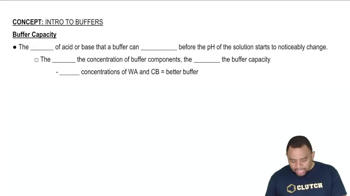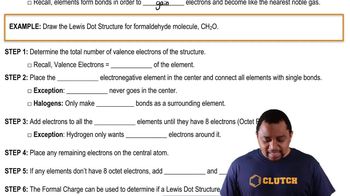Determine whether or not the mixing of each pair of solutions results in a buffer. c. 165.0 mL of 0.10 M HF; 135.0 mL of 0.050 M KOH
If the volume of blood in a normal adult is 5.0 L, what mass of HCl can be neutralized by the buffering system in blood before the pH falls below 7.0 (which would result in death)?
 Verified step by step guidance
Verified step by step guidanceKey Concepts
Buffering System

pH Scale

Neutralization Reaction

Determine whether or not the mixing of each pair of solutions results in a buffer. e. 105.0 mL of 0.15 M CH3NH2; 95.0 mL of 0.10 M HCl
Blood is buffered by carbonic acid and the bicarbonate ion. Normal blood plasma is 0.024 M in HCO3- and 0.0012 M H2CO3 (pKa1 for H2CO3 at body temperature is 6.1).
a. What is the pH of blood plasma?
Blood is buffered by carbonic acid and the bicarbonate ion. Normal blood plasma is 0.024 M in HCO3- and 0.0012 M H2CO3 (pKa1 for H2CO3 at body temperature is 6.1).
c. Given the volume from part (b), what mass of NaOH can be neutralized before the pH rises above 7.8?
The fluids within cells are buffered by H2PO4- and HPO42- . b. Could a buffer system employing H3PO4 as the weak acid and H2PO4- as the weak base be used as a buffer system within cells? Explain.
